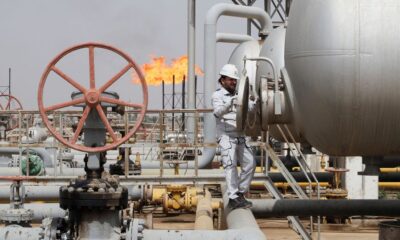Markets continue to price that the worst is over for US bond markets and that the end of Fed rate hikes will occur sooner as the economy in the US, and elsewhere, slow sharply in H2 2022. US stock markets had a banner week based on that theory, which continued Friday with Wall Street posting another day of sharp gains.
It is not just US yields that have retreated sharply over the last week, oil retreated, and this month, industrial metals have taken a beating as well. I’ll not argue with the slow-down predictions although they’re not alone. China has already had one, Europe and the UK are going through one, New Zealand is going to have one, and from Ecuador to Peru, Sri Lanka, and plenty of points in between, emerging markets are feeling some serious pain from inflation and the stagflation shock and disruption to staple supplies like food and energy.
The backwardation in oil futures markets has widened, not lessened, suggesting that despite least weeks’ price falls, energy supplies are as tight as ever. Europe is suffering from reduced Russian natural gas flows; Ecuadorean oil production is expected to go completely offline this week due to cost-of-living protests, and I’m guessing in the US, Honda Civics (a hybrid of course) are this season’s new automotive black as American’s face the reality of owning and running a 10-litre pickup truck. And don’t get me started on the downstream impacts of high natural gas and oil prices on the manufacturing of fertilisers, exacerbated by Russian and Belarus sanctions.
We are already seeing winters of discontent sweeping the UK and Europe and places elsewhere as workers strike over pay increases. None of this adds up to a reason to be piling into equity markets in my mind, because even if bond yields from early hikers start topping out with the US, the real world where companies sell their products isn’t looking too special for H2.
Still, one of the wisest sayings an investor can ever listen to is from John Maynard Keynes. He said that “the market can stay irrational longer than you can stay solvent.” Nary a truer word has been said and as such one should always respect the short-term momentum is that’s the space you play in, and it seems that many do in this gamified investment day and age. The stock market rally could run for another couple of weeks, US yields and the Dollar could continue falling, and even USD/JPY might make it back to 130.00 if US 10-years fall back below 3.0%.
Helping the bounce in sentiment on Friday were US New Homes surprising to the upside, rising by 11% in April. The consensus seems to be that this is an outlier in a downward trend though. On the negative side, Michigan Consumer Sentiment for June fell to a record low of 50.0, with the only tenuous positive being that Inflation Expectations held steady at 5.30% and didn’t move higher.
This week, we have the Fed’s Powell, ECB’s Lagarde, and BOE’s Bailey, all speaking on Wednesday at an economic policy panel discussion at the ECB junket, I mean forum in Portugal. We may well get some tasty snippets to generate short-term vol. Otherwise, data is heavily skewed towards the end of the week. The highlights will be China and US PMI readings released over Thursday and Friday, German Retail Sales on Thursday, and US Personal Income and Expenditure, also on Thursday.
Barring a chock fall in US Personal Income and Expenditure, I can’t see any of that moving the dial on the global risk sentiment rebound. It is clear the market wants to buy the dip, and it’s best to let them get it out of their system. Next week’s JOLTs Job-Opening data and the US Non-Farm Payrolls will provide a sterner test. Tonight’s US Durable Goods may also give the FOMO gnomes an early stress test.
In Asia this week, the ongoing G-7 meeting could be the most relevant one in a decade with Ukraine and Russia at the centre of the agenda. China has already released Industrial Profits this morning, which fell by 6.50% YoY in May, a slight improvement over April. The official and Caixin PMIs at the end of the week are what matter though. Australian Retail Sales on Wednesday are always good for some intra-day AUD vol, but both AUD and NZD are slaves to global sentiment perception, and Australian stock markets are just cost-tailing Wall Street right now. Friday also sees a slew of Manufacturing PMIs released from across Asia, which are usually a decent short-term directional play for local equity markets.
South Korea releases Industrial Production, Manufacturing Production and Retail Sales on Thursday. Retail Sales will remain under pressure as the cost of living increases bite. Industrial Production and Manufacturing should hold steady, but weaker data may see renewed pressure on the Won and other Asian currencies on slowdown fears.
Japan has a packed calendar. Retail Sales and Consumer Confidence should continue to improve as the reopening momentum domestically continues. A weaker yen should help Thursday’s Industrial Production data, but Friday’s Tankan Large Manufacturing Index has downside risks. Arguably the most closely watched item will be Friday’s Tokyo CPI data where June Inflation YoY could breach above 2.0%. It’s a strange old world when markets get excited about 2.0% inflation anywhere but especially in Japan. Although I believe after over two decades, the Bank of Japan has no intention of altering monetary policy, a CPI reading above 2.0% could see temporary pressure on 10-year JGBs and the USD/JPY. That’s all it’s likely to be, temporary.
Finally, it’s Monday so I suppose I have to talk about cryptos for a little bit in their role as a “tradeable asset,” instead of an “investable asset.” Thanks to the rebound in US stock markets and the fall in US yields, Bitcoin looks to have traced out a low of around $18,000.00 for now. From a technical perspective, a rise above $22,000.00 looks possible, extending onwards to $24,000.00. However, in the medium-term, Bitcoin remains in the danger zone, and only a rise above $28,000.00 negates.
Asian equities rally with Wall Street.
Wall Street had an impressive session on Friday, rallying powerfully once again as markets priced in a US recession meaning US interest rate hikes would end sooner than expected. That perverse logic saw the S&P 500 jump 3.07%, the Nasdaq rally 3.34% higher, while the Dow Jones gained 2.70%. Much the same pattern is playing out in US futures in Asia. S&P 500 have added 0.35%, Nasdaq futures have jumped by 0.85%, while Dow futures have gained 0.10% as the FOMO gnomes of Wall Street go hard on growth over value.





























